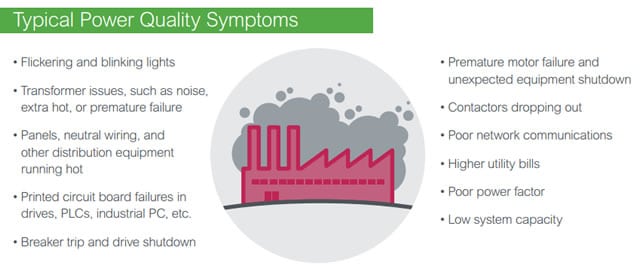In a previous article we looked at the growth ahead in the Building Energy Management System or BEMS market. We also covered the difference between a BEMS and a BMS or Building Management System. Finally, we took a dive into power management as it’s known in critical power buildings.
In this article we look at the differences and relationships between energy management and power management, two terms that are often used interchangeably as often tends to be the case in a building and energy scope.

In the mentioned article on critical power buildings, Kevin Morin, who is responsible for the Critical Power EcoXpert certification badge of Schneider Electric, said that power management systems track the energy performance of a BMS and offer key insights with regards to power distribution parameters, both in real time and over time to see patterns and trends.
The different purposes of power management and energy management
A power management system, he said is an integrated system with power meters, power management software and power quality mitigation equipment.
From a purpose perspective, power management is mainly about the enhancement of electrical reliability or availability. Power availability, reliability, quality and manageability are key in critical power buildings.
Then, what is energy management about? Energy management is more related with the cost saving aspect and ties into existing energy-relate streams to analyze the power distribution systems across all energy-related aspects of a building with the cost saving and energy efficiency perspective.
Cost savings are also key in the drivers of the BEMS market, which is changing in this age of IoT as is the role of building management systems, the possibilities with regards to critical power buildings and so forth.
If power management mainly aims to ensure power or electrical reliability and availability on one hand and energy management, among others, aims to realize cost savings, then how do they impact each other, if at all?
And aren’t both, with the changes we see in various markets, growing towards each other? When do they overlap and can this be cause for less efficiency in one of both or both disciplines?
The overlaps of power management and energy management – power quality and energy efficiency
In the end we want reliability, availability, quality AND efficiency and cost savings, correct? Maybe there are even unexpected costs when implementing an energy saving solution or energy saving measures can lead to a negative impact on the reliability of the electrical network?
In all honesty, given our fascination for technological evolutions such as IoT, our fascination with the role of buildings and the smart building and our attention for energy efficient building technologies in the scope of human, societal and business challenges, understanding the differences between power management and energy management – and how they are evolving and are used – is already something.
In other words: we would never go as far as wondering what could be the unexpected impact of an energy saving measures on electrical reliability or the unexpected costs for that matter. Yet, professionals in facility management, building automation, critical power, energy management and so forth obviously have to.
That explains why we were intrigued by an October 2017 blog post, entitled ‘Exploring Unplanned Costs of LED Lighting Retrofits‘ and written by Kevin Morin who, along with his EcoXpert colleague Martin Feder and power quality (PQ) expert Remi Bolduc really took a deep dive into the matter.

Three takeaways from the blog post that dives much deeper:
- In specific cases LED lighting (energy saving) can impact power quality. So, when planning a big LED lighting project you need to know when and how. And that is what you can read in this paper authored by Remi Bolduc, entitled ‘Impacts of LED lighting on Power Quality’.
- The identification of power quality issues as, for instance, caused by LED lighting (but not alone that) becomes a standard expectation with regards to building management systems today (whereas PQ before was mainly an issue in an industrial or critical power environment).
- With the BMS becoming the digital hub of connectivity in the building, power management, as explained by Martin Feder in our interview on building management evolutions in the age of IP and IoT, PQ and monitoring harmonics comes into that connected equation as well – with an impact on the skills of BMS experts.
Disclaimer: we deliver services to Schneider Electric’s EcoXpert program, including content services. Top image: Shutterstock – Copyright: Stock-Asso – all other images courtesy of mentioned/linked owners






